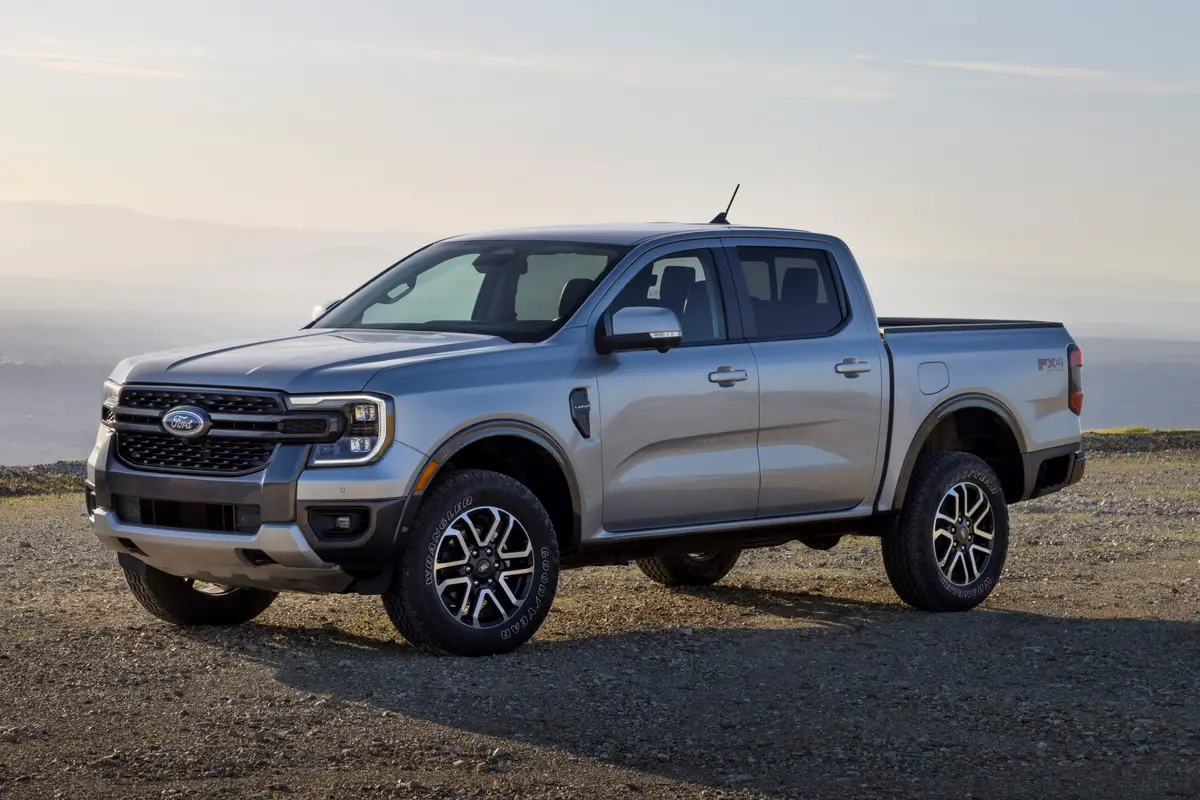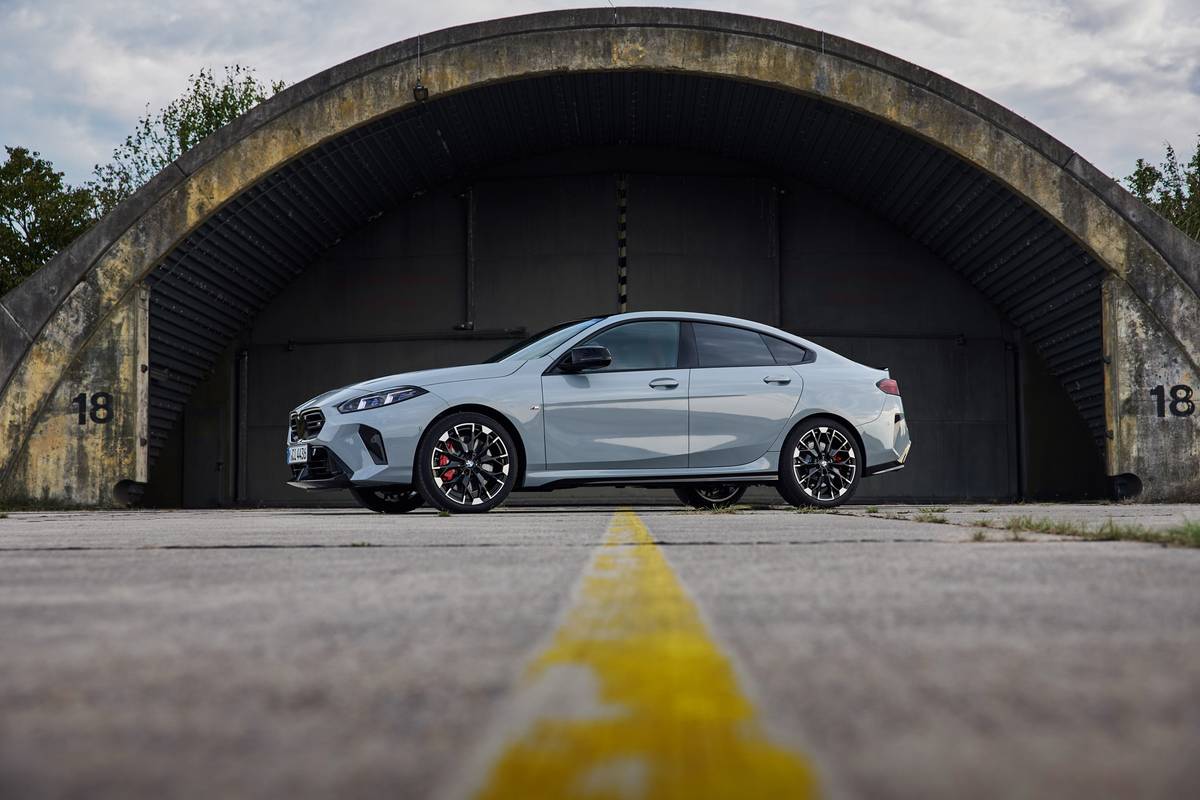washingtonpost.com's view
We believe we are entitled to it all. Call it The Mine Syndrome, or TMS. It’s driving the automobile industry today.
Consider the 2006 Volvo XC90 V-8 sport-utility vehicle. You read that correctly. Volvo, automotive exemplar of all things common-sense, has rolled out its first V-8 engine — a 4.4-liter, 311-horsepower V-8!
It comes down to money. Ford Motor Co., which owns Volvo Cars, wants money. Volvo’s executives and employees want money. Corporate stockholders want money.
If that upsets you, look at your paycheck, bonus check or dividend payment. Look at the house you are trying to sell for several hundred thousand dollars more than you paid for it. You want money, too.
Nowadays, the best way to get money in the automobile industry is to give as many people as possible as many of the things they want as possible in a vehicle that costs as little as possible. It’s a tall order, which is why sport-utility vehicles and other light trucks still account for 49 percent of the new vehicles sold in the United States, even in the midst of soaring fuel prices.
They are tall vehicles with lots of legroom and headroom. Like the XC90 V-8, many can carry seven people. They are motorized offices, media centers and family rooms. About the only thing you can’t do in a sport-utility vehicle is take a shower. But, considering the ingenuity of aftermarket outfitters, showering — at least immediately outside of the vehicle — may be possible.
But material things are just a part of having it all. People want love and respect, psychic rewards difficult to come by in a world where many SUV owners have been demonized as hateful, selfish sorts. Therein is the genius of Volvo’s new XC90 V-8. It is a big, high-powered SUV that comes with social acceptability as standard equipment.
For example, it’s one thing to have a V-8 engine. It’s another to have a gasoline-fueled V-8 with a ULEV II rating (Ultra Low Emissions Vehicle, Stage II). That means Volvo’s V-8 meets or exceeds the toughest clean-air standards in the nation, including those set by the California Air Resources Board.
That is important for people who want to drive their SUVs and be seen as friends of the environment, too.
Fuel economy is equally important. I drove 550 miles in the XC90 — averaging 20 miles per gallon, driving mostly turnpike and highway. That was relatively good mileage for a big SUV, achieved largely through Volvo’s application of variable-valve-timing-and-lift technology.
It works like this: Entry valves open to allow air and fuel to flow into engine combustion chambers. Entry valves close. The air-fuel mixture is compressed and burned, thus producing the power that drives the wheels. Exhaust valves open to dump waste gases. With electronically controlled variable valve timing and lift, the valves — 32 in the case of the XC90 V-8 — open and close with a precision that maximizes power with a minimum increase in fuel consumption.
But better mileage may not yield lower fuel costs for the XC90 V-8. You can get away with using regular 87-octane gasoline in this one. But to operate at peak efficiency, especially in reducing tailpipe emissions, the usually more costly premium unleaded gasoline is required.
Volvo is legendary for vehicle safety. That reputation is upheld by the XC90 V-8. Of course, you can be seriously injured or killed in this vehicle, as you can in anything else. But you’d have to have luck so bad, it would qualify as a curse.
Every aspect of the XC90 V-8, including the crosswise mounting of the engine, is designed to dissipate destructive energy and protect the vehicle’s occupants in a crash. The XC90 also is engineered to do less damage to smaller vehicles in a wreck. Traction and stability control are standard, as are side air bags; and there are head bags to protect the skulls of passengers in the second and third rows of the vehicle.
On top of it all is the requisite plush stuff that motorized hedonists demand — supple leather seats, wood accents, power-operated accessories, premium sound system. And if those things aren’t enough, there is a long list of options.
It’s not so much that Volvo has lost its historically puritanical soul as it is that the company has found a way to acquire more means in support of its loftier ends. Virtue costs money, lots of which remains in the premium SUV segment, where V-8 engines are all the rage and Volvo hopes the XC90 V-8 will haul in the cash.
– – –
Nuts & Bolts
2006 Volvo XC90 V-8
Downside: In a period of high fuel prices, some people may be tempted to short-circuit the XC90 V-8’s good intentions by buying regular unleaded gasoline. Don’t do it. The catalytic converter and other emissions control equipment on this one are expressly designed to work with premium unleaded fuel.
Ride, acceleration and handling: Excellent in all three categories. People who claim that SUVs have inherently bad handling have not driven this one, or any other performance-oriented sport-utility vehicle. All SUVs are not the same.
Head-turning quotient: Looks more like a station wagon than it does anything else. Volvo is staying away from the traditional, aggressive SUV stance with the XC90. That styling technique does not appeal to its customers.
Vehicle layout: The XC90 V-8 is a big all-wheel-drive sport-utility vehicle with a crosswise-mounted front engine. It has four doors and a rear hatch.
Engines/transmissions: The XC90 is available in two engines and two transmissions. The 4.4-liter, 32-valve V-8 develops 311 horsepower at 5,850 revolutions per minute and 325 foot-pounds of torque at 3,900 rpm. That engine is mated to a six-speed automatic transmission that also can be shifted manually. A 2.5-liter, five-cylinder XC90 develops 208 hp at 5,000 rpm and 236 foot-pounds of torque between 1,500 and 4,500 rpm. It is mated to a five-speed automatic that also can be shifted manually.
Cargo and fuel capacities: There is seating for up to seven people. Maximum cargo capacity is 93.2 cubic feet with all passenger seats folded. But with all seats up, cargo capacity behind the third row is 8.8 cubic feet. The XC90 can be equipped to tow up to 5,000 pounds. The fuel tank holds 21.1 gallons of required premium unleaded gasoline.
Mileage: I averaged 20 miles per gallon.
Safety: Side and head air bags; traction and stability control; anti-rollover protection.
Price: Base price on the tested Volvo XC90 V-8 is $45,840. Dealer’s invoice price on that model is $43,125. Price as tested is $49,955, including $3,420 in options and a $695 destination charge. Prices sourced from Volvo and Edmunds.com.
Purse-strings note: High-priced common sense. You want it all? Dig deeply into your pockets.
Latest news



